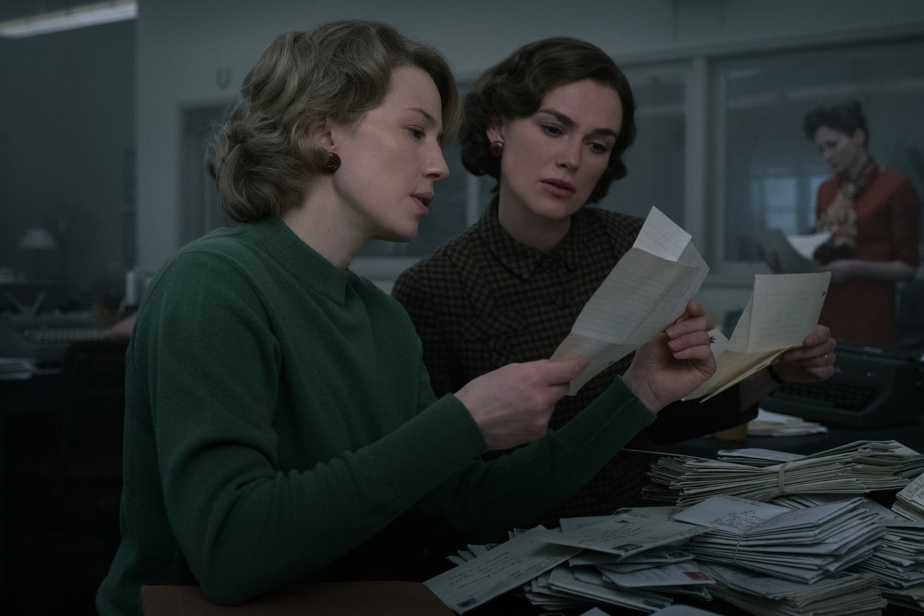In the early 1960s, a series of feminicides hit Boston. Two women journalists investigate the subject and have to face many obstacles.
Although the same subject is at the center of the film, Boston Strangler has nothing to do with the 1968 feature film, directed by Richard Fleisher, starring Tony Curtis and Henry Fonda. Based on the book by Gerold Frank, this one was limited to the point of view of the main investigator and the killer.
The version directed and scripted by Matt Ruskin looks at the work of the journalists who covered this horrific story. The big peculiarity is that they were women, a rarity at the time for a story that was making headlines.
Keira Knightley portrays Loretta McLaughlin, a lifestyle reporter for the Boston Record-American. She wants to write about more serious subjects like her colleague Jean Cole (Carrie Coon), but her boss Jack Maclaine (Chris Cooper) stops her. In 1962, a trio of murdered women, with no apparent connection, catch Loretta’s attention. A few days later, his text revealing a similar modus operandi for the murder of the three victims appeared on the front page. This provokes the ire of the Boston police, who had found no connection between the assassinations. While the bodies of women found dead with a scarf tied around their necks accumulate, Loretta and Jean continue the investigation in an extremely restrictive climate of sexism.
Shot in the Massachusetts capital, Boston Strangler aptly depicts the times. We feel that women can start to assert themselves and that some men give them a chance, but that the process is difficult. They are also immediately called to order when their “freedom” encroaches in the slightest on that of men.
The production, without artifice, leaves plenty of room for storytelling and interpretation. Keira Knightley soberly plays the heroine who, despite the pressure and the danger, keeps her cool. Even more steadfast is Jean Cole—one might say cool—played with aplomb by Carrie Coon, who also played journalist Meg Greenfield on The Post.
Although they investigate a series of murders, the crimes are never explicitly shown, which is in good taste. The climate of panic in the city is palpable, but the central point of the story remains the battles between these two women at the newspaper, at the police station, at the crime scene and at home. It’s not a great movie, but what it tells is worthy of interest.















